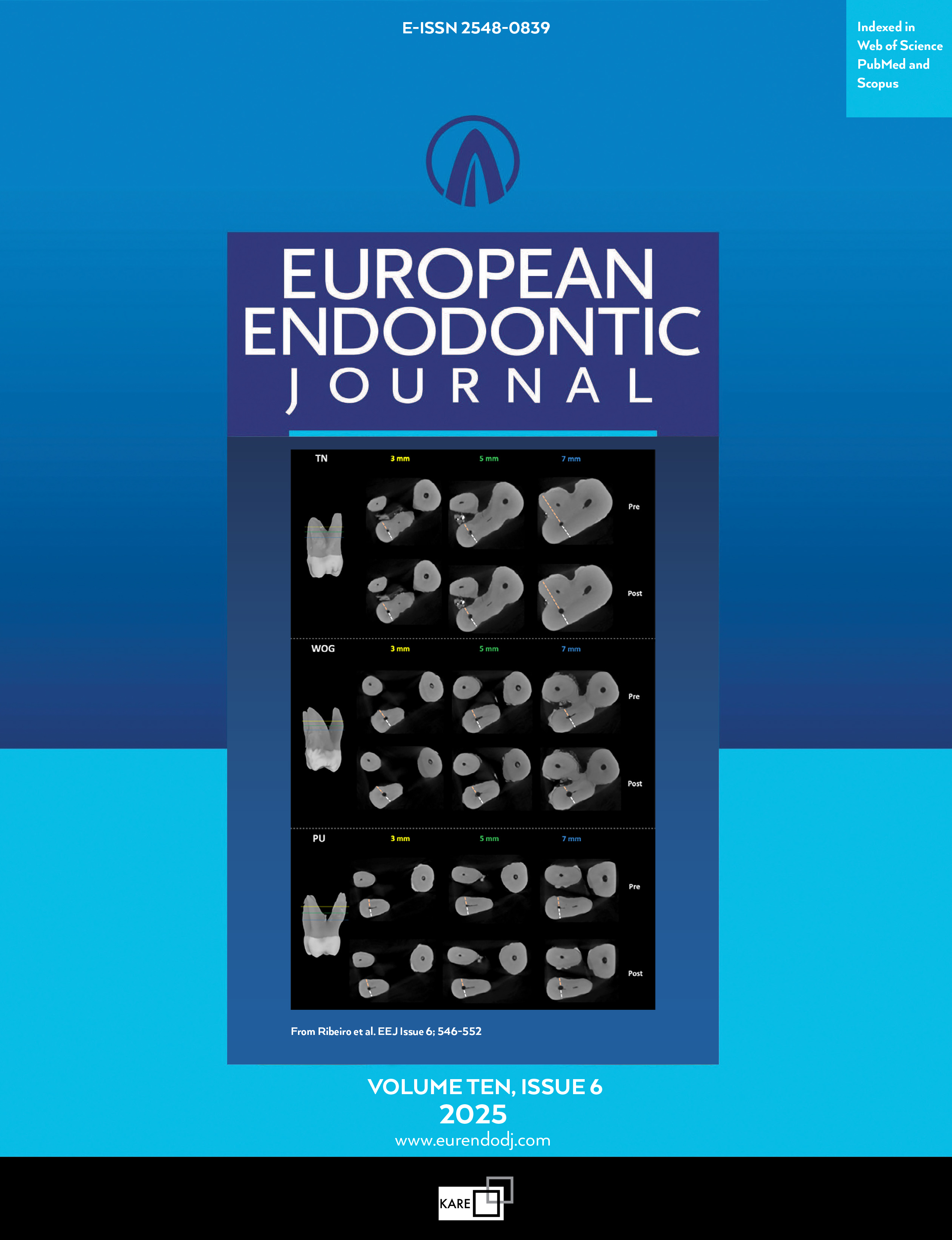Metrics
2024 IMPACT FACTOR
5 year Impact Factor
Eigenfactor Score
2024 CiteScore
Journal Citation Reports
(Clarivate 2025, JIF Rank)
Diagnosis and Management of Apical Fenestrations Associated with Endodontic Diseases: A Literature Review
Jasmine Wong, Angeline Lee, Chengfei ZhangDepartment of Restorative Dental Sciences, Faculty of Dentistry, The University of Hong Kong, Hong KongApical fenestration describes a window-like opening of the alveolar bone that involves the root apex of the associated tooth. Mucosal fenestration is a similar defect of the overlying mucosa and, when presented with a concomitant apical fenestration, may expose the root apex to the oral environment. A fenestration may arise from physiological and pathological processes. Although its presence does not necessitate treatment per se, these lesions have significant clinical implications when associated with endodontic diseases. Apical fenestrations associated with endodontic infections are relatively uncommon and can easily be overlooked or misdiagnosed. A thorough understanding of these lesions is key for timely diagnosis and successful management. The aim of this study was to review the epidemiology, aetiological factors, characteristics, management methods and potential outcomes of apical fenestrations associated with endodontic diseases. A search of online databases for relevant studies was conducted. With the inclusion of hand searched articles, 20 articles, consisting of case reports and series, were identified, and the key characteristics of each case were summarised. Apical fenestrations were found to be most commonly associated with maxillary teeth and almost always occur on the buccal aspect of the alveolar bone. Clinicians may consider the possibility of an apical fenestration with concurrent endodontic pathology when patients present with non-healing sinus tracts, exposed tooth apices and/or persistent pain after endodontic treatment, particularly on palpation and mastication. Clinical signs and symptoms can vary, hence cone-beam computed tomography is an important tool for diagnosis. The management involves surgically restoring a favourable anatomical configuration of the root apex in relation to the alveolar bony housing and may be combined with guided tissue regeneration and/or grafting procedures. Sloughing, reopening and infection are potential complications. The literature on apical fenestrations associated with endodontic diseases is limited, thus further research is needed to develop evidence-based guidelines for the diagnosis and management of these lesions. (EEJ-2020-08-213)
Keywords: Apical fenestration, endodontics, mucosal fenestration, periradicular surgery, persistent painManuscript Language: English
(1624 downloaded)


